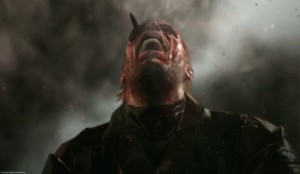 Yes, folks, I know it’s a shock, but Konami still somehow continue to make EA seem like Blizzard with every action they take. It just blows my mind on so many levels – how is there not a SINGLE person there who has some kind of power and isn’t completely and utterly insane? It honestly seems like they’re deliberately trying to bury themselves, which is especially jarring considering the fact that for over 30 years Konami used to be one of gaming’s top tier companies. In case you have no idea what I’m talking about at all, let me try to summarize the situation the best I can. If you’ve been playing videogames at all, chances are you’ve at least heard of some of Konami’s franchises – they’re the powerhouses behind awesomeness like “Silent Hill”, “Castlevania”, “Metal Gear Solid”, “PES”, “Contra”, “Dance Dance Revolution” and many, many more! They’re the guys that originated the Konami code, which is the most famous cheat code in all of gaming, to the point where it was referenced in everything, from numerous non-Konami games to even Disney’s “Wreck-It Ralph”. They’re holding a treasury of licenses… And they have no idea what to do with them.
Yes, folks, I know it’s a shock, but Konami still somehow continue to make EA seem like Blizzard with every action they take. It just blows my mind on so many levels – how is there not a SINGLE person there who has some kind of power and isn’t completely and utterly insane? It honestly seems like they’re deliberately trying to bury themselves, which is especially jarring considering the fact that for over 30 years Konami used to be one of gaming’s top tier companies. In case you have no idea what I’m talking about at all, let me try to summarize the situation the best I can. If you’ve been playing videogames at all, chances are you’ve at least heard of some of Konami’s franchises – they’re the powerhouses behind awesomeness like “Silent Hill”, “Castlevania”, “Metal Gear Solid”, “PES”, “Contra”, “Dance Dance Revolution” and many, many more! They’re the guys that originated the Konami code, which is the most famous cheat code in all of gaming, to the point where it was referenced in everything, from numerous non-Konami games to even Disney’s “Wreck-It Ralph”. They’re holding a treasury of licenses… And they have no idea what to do with them.
Let me ask you something – when’s the last time you played a new “Contra” game? I don’t know about you, but the last one I played was in 2007 (almost 10 years ago), and that was on the DS only. Anything else we’ve received from the “Contra” franchise has been remakes, the vast majority of which flew under the radar. What about “Silent Hill”, largely regarded as the best horror franchise in gaming? The last true game from that franchise, made by the original creators, was “Silent Hill 3”, with the next one, “Silent Hill 4: The Room” being essentially an entirely different game with the “Silent Hill” name slapped on top of it for marketing purposes even though it didn’t fit the series’ lore at ALL. Afterwards, the series has been given from developer to developer with moderate success, ranging from a pale imitation of the original (“Origins”) to a pretty damn good game in its own right even if it was a deviation of the series (“Shattered Memories”) to ‘what the hell am I even playing is that a friggin’ dungeon crawler’ (“Book of Memories”). Gaming genius Hideo Kojima, the mastermind behind “Metal Gear Solid” (more on that later) and cinematic genius Guillermo del Toro, the filmmaker behind abstract classics like “Pan’s Labyrinth”, were teamed up at one point to create a brand new entry in the series, with “The Walking Dead” star Norman Reedus set to play the main character, and if that sounds like a match made in Heaven then you’re not alone on this. The project was announced through a short, free demo known as “P.T.”, which many regarded as the best horror game in recent years. Soon after its announcements, the new “Silent Hill” game was cancelled and “P.T.” was made unavailable to download in what can only be described as an act of spite. Right now, the only way you can possibly play it is if you had downloaded it before it was removed and never deleted it.
“Castlevania” also had it pretty rough, considering just how revolutionary it was for gaming. Its early installments on the NES and SNES are largely considered to be among the best games of all time, and its PS1 offering, “Symphony of the Night”, alongside Nintendo’s “Metroid”, helped kick-start a brand new franchise that is still around to this day – the “Metroidvania”. Following “Symphony of the Night”, an unspoken rule was made – the handheld “Castlevania” games would follow the “Metroidvania” formula, while the console titles would push the envelope and tell their own grand stories. The entire premise of “Castlevania” was that it basically did “Assassin’s Creed” before “Assassin’s Creed” – every installment was set in a different historical era, moving gradually forward and telling their own story about the fight of several magical families against Dracula. We had the entire story leading up to the climactic fight in 1999 when Dracula was killed once and for all, we got the “Sorrow” games which basically serve as an epilogue to the entire franchise and deal with someone trying to bring back Dracula through reincarnation, so naturally, all eyes were set on the next big console game being set in 1999 so that the saga could be complete. But nope. Instead, the next game in the franchise, “Lords of Shadow”, was a complete reboot starting up a new universe and leaving the old one (which has been going continuously since the 80s) unfinished despite the fact that it lacked JUST ONE GAME TO BE COMPLETED. Okay, that’s all fine and good, maybe the new game will modernize the “Castlevania” series for a new audience, right? Nope! Instead, it throws out literally everything that people loved about it and replaces it with a “God of War” ripoff. Two more games followed, both set in the new universe (the second of which had you playing as Dracula in modern day and I don’t even know what’s going on anymore), and since neither of them was received all that well, one of the greatest franchises in gaming history was shelved for good.
But the greatest insult Konami had was reserved for “Metal Gear Solid” fans. I can’t think of many franchises that were as revolutionary as MGS – without it, I’m positive that stories in gaming wouldn’t have been nearly as good as they are today. You can actually start to see exactly when most videogames started to have a serious plot with complex characters and motivations – early 2000s, just a few years after the first “Metal Gear Solid” came out. With each new game, the envelope was pushed further and further. “Metal Gear Solid 2”, while controversial at the time, is today generally regarded as the first example of post-modernism in videogames. “Metal Gear Solid 3” is still universally beloved for its mature (and not in a “blood, guts and swearing” type of way) storyline about loyalty and patriotism. “Metal Gear Solid 4” introduced many, MANY elements that would become staples of the modern stealth genre. I could go on and on, but the point is that these games are amazing, revolutionary and beloved by many, and it’s in no small part thanks to the efforts of Hideo Kojima (remember him?), who has managed to build a very unique universe that deals with a whole lot of real world issues such as nuclear deterrence, a soldier’s worth, personal agency and more. Just like with “Castlevania”, we only really needed one game for the saga to be finished, but fortunately we were lucky enough to get it in the form of last year’s “Metal Gear Solid V”. Kojima always intended for it to be the final “Metal Gear Solid” title, and as such wanted it to be as ambitious as possible, taking a very long time to develop an engine from the ground up and to touch up the story and characters. Unfortunately, the people at Konami weren’t happy with the game going overbudget, or with the fact that “Metal Gear Solid” was their only successful franchise (well, maybe if they hadn’t executed every single one of their others, it wouldn’t be). Their solution? Fire Kojima in a MASSIVE debacle that I won’t get into now (basically, they denied the fact that he was fired even when it was blatantly obvious that he was, kept him on a non-compete contract and even prevented him from making public appearances and claiming an award purely out of spite) and absolutely butcher “Metal Gear Solid V”, cutting out at least a third of the planned content, though some sources put the number closer to 45-50%.
So Kojima – the guy who revolutionized gaming time and time again with “Metal Gear Solid” is no longer working at Konami and now has his own company, with funding from Sony. All is well for him at least, but what about the “Metal Gear Solid” series? Well, fans would receive slaps after slaps in the face after Kojima’s departure. It was highly publicized that a brand new studio was made in LA specifically to help out with “Metal Gear Solid V”’s production, and it was revealed following Kojima’s departure that the plan was to have a new “Metal Gear” series with the same engine which would release yearly – one year the entry would be made by the Tokyo studio, and the next year LA would have a turn. It’s a business model that has worked wonders for “Call of Duty”, and honestly, once you’ve got the assets and engine in place, I genuinely don’t see a reason why it wouldn’t have worked for “Metal Gear” either. But with Kojima being fired, the LA studio was dissolved, ending any and all hope that we would get yearly games in the series, for better or for worse. Next up, a brand new project was announced – a remake of “Metal Gear Solid 3” with beautiful updated graphics… as a slot machine. Indeed, Konami announced that they would lessen their focus on developing console games and instead lean more towards slot machines and mobile titles using their licenses, but still assured fans that a new console “Metal Gear” would come. And it came… In the form of “Metal Gear Survive”, which is a co-op zombie survival game set in an alternate universe. Suffice to say, it is not at ALL what fans were wanting on absolutely any level, and the trailer currently has over 45,000 dislikes on YouTube and counting.
Of course, even if we leave all gaming stuff aside for now (which is difficult, I know, but bear with me here) and just focus on the inner workings of Konami as a company, then they’re STILL terrible. If the fact that they fired one of gaming’s greatest visionaries, and the guy who pretty much presented them their biggest (and, as of the present, only viable) franchise on a silver platter doesn’t make you raise an eyebrow, or that they closed an entire studio just because plans were scrapped for them to work on a gaming franchise (you could have them working on OTHER games, you know), then the fact that they’re pretty much treating their staff like prisoners certainly should. I’m not going to go into a lot of details here because I’m already approaching 2000 words, but suffice to say, Konami just might be one of the worst employers I’ve ever seen in my life. Probably what takes the cake is that they take game developers who are not “productive” in their eyes (we’re talking creative types – designers, artists, programmers, etc) and force them to work on the slot machine assembly line. That is just beyond insulting.
In conclusion, you don’t really need to look far in order to find a plethora of evidence for the fact that Konami is literally the single worst gaming company currently in business. None of the others – not even EA – even comes CLOSE to the level of shadiness and disrespect for the fans that Konami has demonstrated in the last 10 years. And, from the looks of things, it won’t get any better. Don’t buy “Metal Gear Survive”, or any other Konami game. Let them fade into obscurity. It’s better for everyone that way.
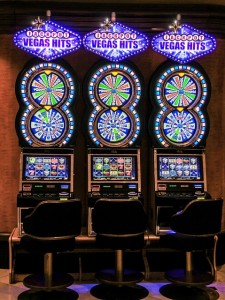 Gaming and iGaming. As words, they’re so similar that they’re literally just a single letter apart, and yet as terms they couldn’t be any more different! The people who play videogames and the people who play things like online slots, roulette and blackjack tend to belong to very different social circles and demographics, as far as studies have shown us. And yet there is some overlap between them – clearly, or else I wouldn’t be here talking to you about it! Indeed, yours truly is a living example of someone who appreciates gaming in all of its forms, be it normal gaming or iGaming, and honestly, it’s not like I’m alone. Considering the fact that there are billions of people who play videogames worldwide, it’s not hard to imagine that at least a small percentage of them also likes to play slots occasionally, with even more gamers wanting to get into online gambling, but being unsure of how exactly to pull it off.
Gaming and iGaming. As words, they’re so similar that they’re literally just a single letter apart, and yet as terms they couldn’t be any more different! The people who play videogames and the people who play things like online slots, roulette and blackjack tend to belong to very different social circles and demographics, as far as studies have shown us. And yet there is some overlap between them – clearly, or else I wouldn’t be here talking to you about it! Indeed, yours truly is a living example of someone who appreciates gaming in all of its forms, be it normal gaming or iGaming, and honestly, it’s not like I’m alone. Considering the fact that there are billions of people who play videogames worldwide, it’s not hard to imagine that at least a small percentage of them also likes to play slots occasionally, with even more gamers wanting to get into online gambling, but being unsure of how exactly to pull it off.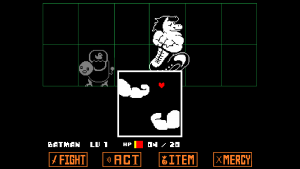 Random chance has played a major part in games since games have existed. And I’m not just talking about videogames, I’m talking about games in general – practically every single game ever invented in the history of mankind has incorporated chance within its rules to some degree. While in some, like sports, chance is often a negligible part of the entire experience, in others, like gambling,
Random chance has played a major part in games since games have existed. And I’m not just talking about videogames, I’m talking about games in general – practically every single game ever invented in the history of mankind has incorporated chance within its rules to some degree. While in some, like sports, chance is often a negligible part of the entire experience, in others, like gambling, 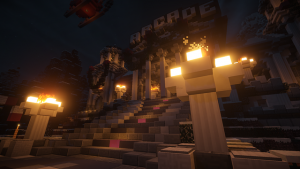
 Only a few days ago, the latest installment of the popular “Far Cry” franchise, “Far Cry Primal”, was released to critical and commercial success. The game holds a 77/100 “positive” rating on review aggregator Metacritic, and while sales numbers still haven’t been released, it’s a safe bet that it has made UbiSoft just a tad bit richer. But that’s not what we’re here to talk about today, as I’m fairly certain the overwhelming majority of you don’t really want to listen to sales figures and ratings and all that jazz. Oh, no, I’ve got something a lot more interesting in store for you, guys – the the UbiVerse!
Only a few days ago, the latest installment of the popular “Far Cry” franchise, “Far Cry Primal”, was released to critical and commercial success. The game holds a 77/100 “positive” rating on review aggregator Metacritic, and while sales numbers still haven’t been released, it’s a safe bet that it has made UbiSoft just a tad bit richer. But that’s not what we’re here to talk about today, as I’m fairly certain the overwhelming majority of you don’t really want to listen to sales figures and ratings and all that jazz. Oh, no, I’ve got something a lot more interesting in store for you, guys – the the UbiVerse!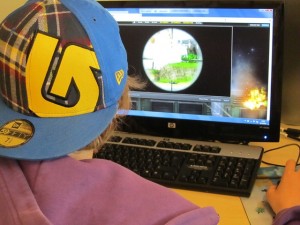 I am a living example myself – I’ve played far more games of all kinds throughout my childhood and am not even remotely violent – I struggle to swat a fly! But I am aware that could be an accident. There have been many experiments and researches done on the topic. Recently, a study was conducted in Bath University, Bristol Uni and UCL with over 2900 kids. The results are yet again not very clear – there is none or very insignificant relation between kids exposed to games starting from the age of 8-9 and their behavior – violence, attention disorders and depressions at later age. This is by far not a first – there has been tens and tens of studies supporting each side of the argument, making it impossible to state for sure what the truth is. One thing is for sure – all this suggests that the issue is far more complex than a just yes/no answer.
I am a living example myself – I’ve played far more games of all kinds throughout my childhood and am not even remotely violent – I struggle to swat a fly! But I am aware that could be an accident. There have been many experiments and researches done on the topic. Recently, a study was conducted in Bath University, Bristol Uni and UCL with over 2900 kids. The results are yet again not very clear – there is none or very insignificant relation between kids exposed to games starting from the age of 8-9 and their behavior – violence, attention disorders and depressions at later age. This is by far not a first – there has been tens and tens of studies supporting each side of the argument, making it impossible to state for sure what the truth is. One thing is for sure – all this suggests that the issue is far more complex than a just yes/no answer.